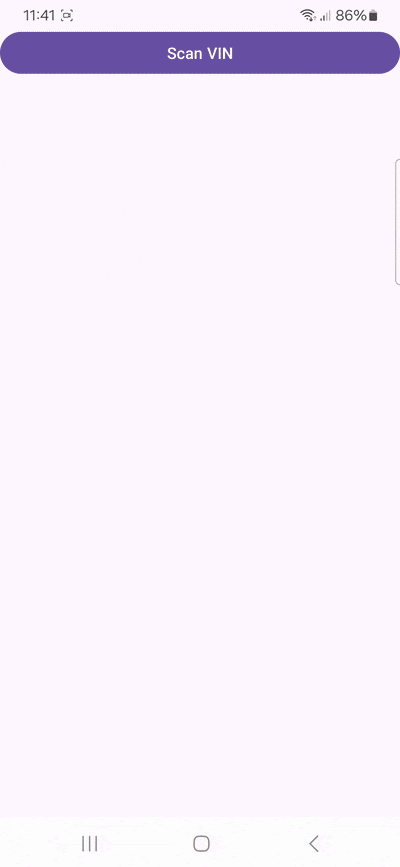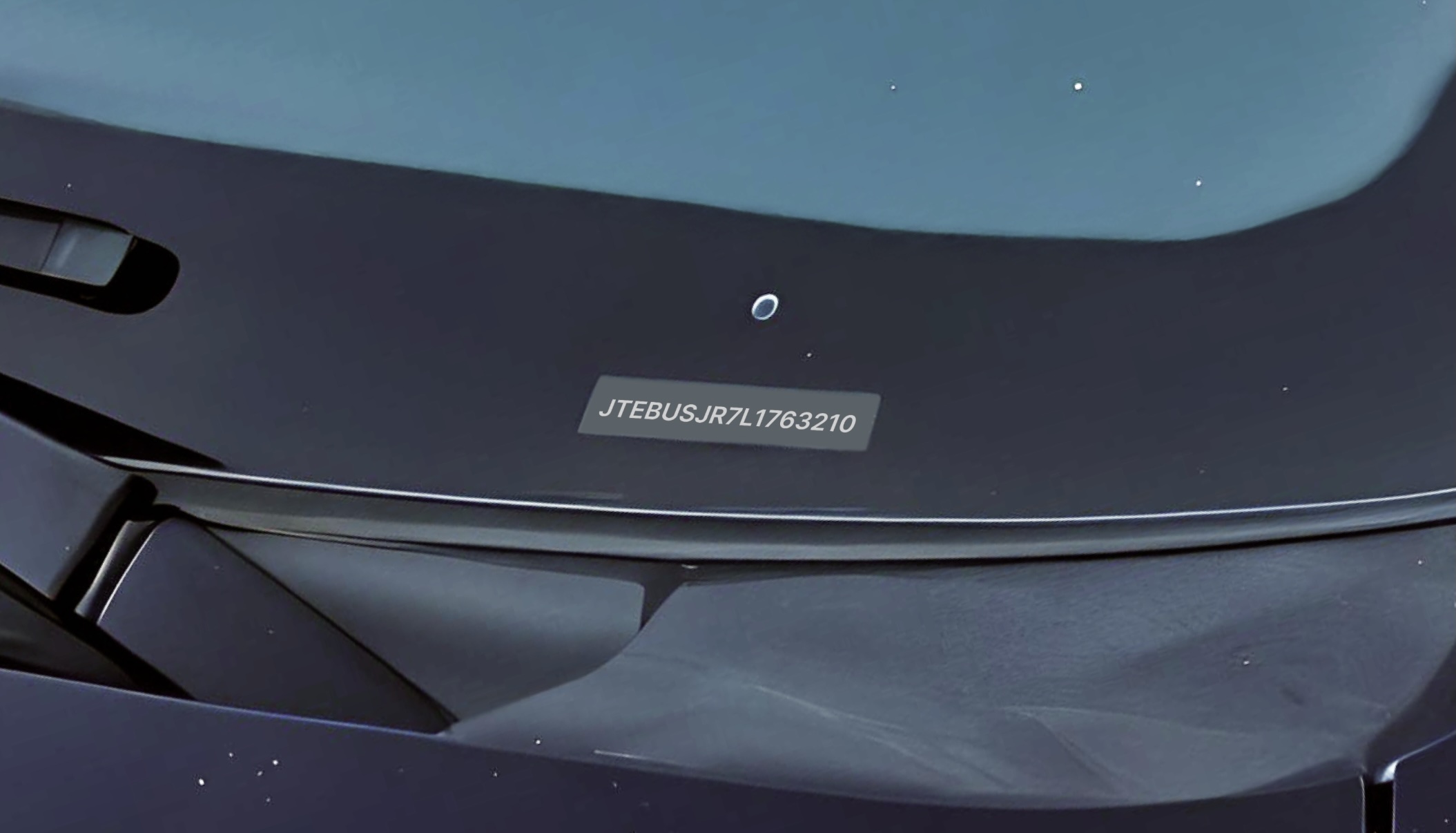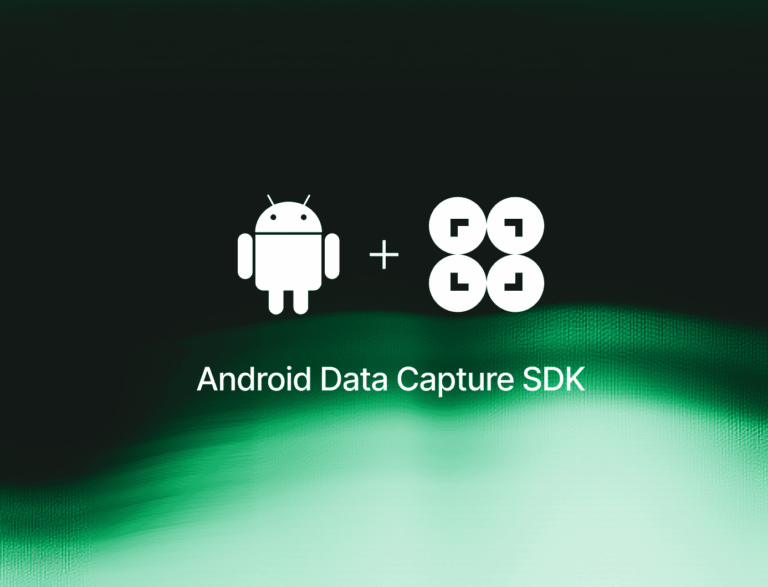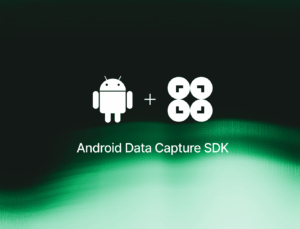In this tutorial, we’ll use Android Studio and the Scanbot VIN Scanner SDK to create an app for extracting Vehicle Identification Numbers from a live camera stream, which can then be processed further.

We’ll achieve this by following these steps:
- Preparing the project
- Initializing the SDK
- Setting up the main screen
- Implementing the VIN scanning feature
All you need is the latest version of Android Studio and you’re good to go.
Want to see the final code right away? Click here.
MainActivity.kt:
package com.example.androidvinscanner
import android.os.Bundle
import androidx.activity.enableEdgeToEdge
import androidx.appcompat.app.AppCompatActivity
import androidx.core.view.ViewCompat
import androidx.core.view.WindowInsetsCompat
import android.widget.Button
import android.widget.Toast
import androidx.activity.result.ActivityResultLauncher
import io.scanbot.sdk.ui_v2.vin.*
import io.scanbot.sdk.ui_v2.vin.configuration.*
class MainActivity : AppCompatActivity() {
val resultLauncher: ActivityResultLauncher<VinScannerScreenConfiguration> =
registerForActivityResult(VinScannerActivity.ResultContract()) { resultEntity: VinScannerActivity.Result ->
if (resultEntity.resultOk) {
resultEntity.result?.let { result ->
when {
!result.textResult?.rawText.isNullOrEmpty() -> {
Toast.makeText(this, result.textResult.rawText, Toast.LENGTH_LONG).show()
}
!result.barcodeResult?.extractedVIN.isNullOrEmpty() -> {
Toast.makeText(this, result.barcodeResult.extractedVIN, Toast.LENGTH_LONG).show()
}
else -> {
Toast.makeText(this, "No VIN found.", Toast.LENGTH_LONG).show()
}
}
}
}
}
override fun onCreate(savedInstanceState: Bundle?) {
super.onCreate(savedInstanceState)
enableEdgeToEdge()
setContentView(R.layout.activity_main)
ViewCompat.setOnApplyWindowInsetsListener(findViewById(R.id.main)) { v, insets ->
val systemBars = insets.getInsets(WindowInsetsCompat.Type.systemBars())
v.setPadding(systemBars.left, systemBars.top, systemBars.right, systemBars.bottom)
insets
}
findViewById<Button>(R.id.btn_scan_vin).setOnClickListener {
val configuration = VinScannerScreenConfiguration().apply {
scannerConfiguration.extractVINFromBarcode = true
}
resultLauncher.launch(configuration)
}
}
}Step 1: Prepare the project
Create a new Empty Views Activity and name the project (e.g., “Android VIN Scanner”).
When your project is ready, go to settings.gradle.kts and add the Maven repositories for our SDK:
dependencyResolutionManagement {
repositoriesMode.set(RepositoriesMode.FAIL_ON_PROJECT_REPOS)
repositories {
google()
mavenCentral()
// Add the repositories here:
maven(url = "https://nexus.scanbot.io/nexus/content/repositories/releases/")
maven(url = "https://nexus.scanbot.io/nexus/content/repositories/snapshots/")
}
}Now go to app/build.gradle.kts and add the dependencies for the Scanbot SDK and the RTU UI:
dependencies {
implementation("io.scanbot:sdk-package-2:7.1.0")
implementation("io.scanbot:sdk-textpattern-assets:7.1.0")
implementation("io.scanbot:rtu-ui-v2-bundle:7.1.0")Sync the project.
💡 We use Scanbot SDK version 7.1.0 in this tutorial. You can find the latest version in the changelog.
We need to access the device camera to scan Vehicle Identification Numbers. Therefore, add the necessary permissions in AndroidManifest.xml:
<?xml version="1.0" encoding="utf-8"?>
<manifest xmlns:android="http://schemas.android.com/apk/res/android"
xmlns:tools="http://schemas.android.com/tools">
// Add the permissions here:
<uses-permission android:name="android.permission.CAMERA" />
<uses-feature android:name="android.hardware.camera" />
<application
<!-- ... -->Step 2: Initialize the SDK
Before we can use the Scanbot VIN Scanner SDK, we need to initialize it. The recommended approach is to do it in your Application implementation. This ensures the SDK is correctly initialized even when the app‘s process is restored after being terminated in the background.
First, we need to create an Application subclass by right-clicking on the folder app/kotlin+java/com.example.androidvinscanner, selecting New > Kotlin Class/File, and naming it (e.g. “ExampleApplication”).
In the resulting ExampleApplication.kt, let’s first add the necessary imports.
import android.app.Application
import io.scanbot.sdk.ScanbotSDKInitializerThen we make ExampleApplication extend the Application class by adding : Application() and putting the code for initializing the SDK inside it.
class ExampleApplication : Application() {
override fun onCreate() {
super.onCreate()
ScanbotSDKInitializer()
// Optional: Uncomment the next line if you have a license key.
// .license(this, LICENSE_KEY)
.initialize(this)
}
}💡 Without a license key, our SDK only runs for 60 seconds per session. This is more than enough for the purposes of our tutorial, but if you like, you can generate a license key. Just make sure to change your applicationId in app/build.gradle.kts to io.scanbot.androiddocumentscanner and use that ID for generating the license.
Finally, we need to register the ExampleApplication class in AndroidManifest.xml.
<application
android:name=".ExampleApplication"
<!-- ... -->Step 3: Set up the main screen
We’re going to build a rudimentary UI so we can quickly start the VIN Scanner from the main screen.
For this tutorial, we’re going to go with a single-button layout, which you can copy and paste into app/res/layout/activity_main.xml:
<?xml version="1.0" encoding="utf-8"?>
<androidx.constraintlayout.widget.ConstraintLayout xmlns:android="http://schemas.android.com/apk/res/android"
xmlns:app="http://schemas.android.com/apk/res-auto"
xmlns:tools="http://schemas.android.com/tools"
android:id="@+id/main"
android:layout_width="match_parent"
android:layout_height="match_parent"
tools:context=".MainActivity">
<Button
android:id="@+id/btn_scan_vin"
android:layout_width="0dp"
android:layout_height="wrap_content"
android:layout_marginBottom="20dp"
android:text="Scan VIN"
app:layout_constraintEnd_toEndOf="parent"
app:layout_constraintStart_toStartOf="parent"
app:layout_constraintTop_toTopOf="parent" />
</androidx.constraintlayout.widget.ConstraintLayout>Next, we’ll connect the button to our RTU UI’s scanning screen.
Step 4: Implement the VIN scanning feature
Go to MainActivity.kt and add the necessary imports.
import android.widget.Button
import android.widget.Toast
import androidx.activity.result.ActivityResultLauncher
import io.scanbot.sdk.ui_v2.vin.*
import io.scanbot.sdk.ui_v2.vin.configuration.*In the MainActivity class, add a property that we’ll use to launch the VIN Scanner. We’ll also extract the raw text from the scan result and display it to the user in a Toast message.
class MainActivity : AppCompatActivity() {
val resultLauncher: ActivityResultLauncher<VinScannerScreenConfiguration> =
registerForActivityResult(VinScannerActivity.ResultContract()) { resultEntity: VinScannerActivity.Result ->
if (resultEntity.resultOk) {
resultEntity.result?.textResult?.rawText?.let {
Toast.makeText(this, it, Toast.LENGTH_LONG).show()
}
}
}
override fun onCreate(savedInstanceState: Bundle?) {
// ...In the onCreate() method, set up an OnClickListener for the Scan VIN button. When the button is clicked, it starts the resultLauncher using a configuration object.
// ... paste after the existing code in onCreate():
findViewById<Button>(R.id.btn_scan_vin).setOnClickListener {
val configuration = VinScannerScreenConfiguration()
// Start the recognizer activity.
resultLauncher.launch(configuration)
}Your MainActivity.kt will then look like this:
package com.example.androidvinscanner
import android.os.Bundle
import androidx.activity.enableEdgeToEdge
import androidx.appcompat.app.AppCompatActivity
import androidx.core.view.ViewCompat
import androidx.core.view.WindowInsetsCompat
import android.widget.Button
import android.widget.Toast
import androidx.activity.result.ActivityResultLauncher
import io.scanbot.sdk.ui_v2.vin.*
import io.scanbot.sdk.ui_v2.vin.configuration.*
class MainActivity : AppCompatActivity() {
val resultLauncher: ActivityResultLauncher<VinScannerScreenConfiguration> =
registerForActivityResult(VinScannerActivity.ResultContract()) { resultEntity: VinScannerActivity.Result ->
if (resultEntity.resultOk) {
resultEntity.result?.textResult?.rawText?.let {
Toast.makeText(this, it, Toast.LENGTH_LONG).show()
}
}
}
override fun onCreate(savedInstanceState: Bundle?) {
super.onCreate(savedInstanceState)
enableEdgeToEdge()
setContentView(R.layout.activity_main)
ViewCompat.setOnApplyWindowInsetsListener(findViewById(R.id.main)) { v, insets ->
val systemBars = insets.getInsets(WindowInsetsCompat.Type.systemBars())
v.setPadding(systemBars.left, systemBars.top, systemBars.right, systemBars.bottom)
insets
}
findViewById<Button>(R.id.btn_scan_vin).setOnClickListener {
val configuration = VinScannerScreenConfiguration()
resultLauncher.launch(configuration)
}
}
}Now build and run the app and scan a Vehicle Identification Number …

… to test your scanner!

Optional: Enable VIN barcode scanning
VINs often come with a barcode encoding the same character sequence. You can enable barcode scanning in addition to regular VIN extraction to make your app even more reliable.
To do that, first add the following dependency to app/build.gradle.kts:
implementation("io.scanbot:bundle-sdk-barcode-assets:7.1.0")Then, in MainActivity.kt, go to the even listener and adapt the scanner configuration to enable extraction from VIN barcodes:
findViewById<Button>(R.id.btn_scan_vin).setOnClickListener {
val configuration = VinScannerScreenConfiguration().apply {
scannerConfiguration.extractVINFromBarcode = true
}
resultLauncher.launch(configuration)
}Finally, change the logic so that the scanning result is always displayed in a toast no matter if the scanner first picks up the character sequence or the barcode:
val resultLauncher: ActivityResultLauncher<VinScannerScreenConfiguration> =
registerForActivityResult(VinScannerActivity.ResultContract()) { resultEntity: VinScannerActivity.Result ->
if (resultEntity.resultOk) {
resultEntity.result?.let { result ->
when {
!result.textResult?.rawText.isNullOrEmpty() -> {
Toast.makeText(this, result.textResult.rawText, Toast.LENGTH_LONG).show()
}
!result.barcodeResult?.extractedVIN.isNullOrEmpty() -> {
Toast.makeText(this, result.barcodeResult.extractedVIN, Toast.LENGTH_LONG).show()
}
else -> {
Toast.makeText(this, "No VIN found.", Toast.LENGTH_LONG).show()
}
}
}
}
}Conclusion
Congratulations! You’ve successfully integrated powerful VIN scanning functionalities into your Android app 🎉
You can further customize the scanning interface to suit your preferences. Head over to the SDK’s RTU UI documentation to learn more.
If this tutorial has piqued your interest in integrating data capture functionalities into your Android app, make sure to take a look at the other neat features in the Data Capture SDK’s documentation – or run our example project for a more hands-on experience.
Should you have questions about this tutorial or run into any issues, we’re happy to help! Just shoot us an email via tutorial-support@scanbot.io.
Happy scanning! 🤳





